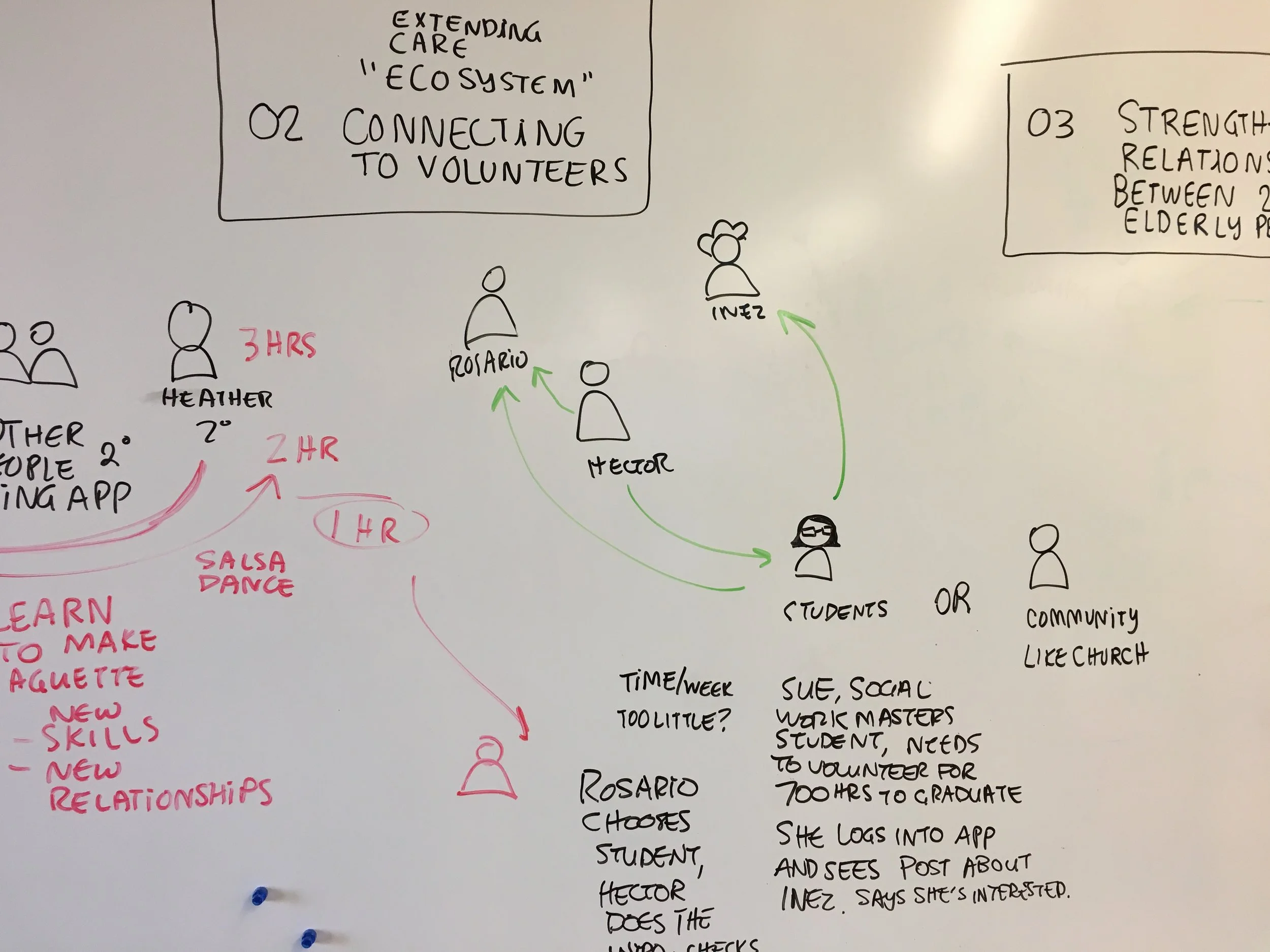About the Project
There are 5 million people suffering from Alzheimer's in America. Patients suffering from initial stages of Dementia can be looked after at home if the family and caregivers can co-ordinate care giving.
Team : 1 Business Analysts , 1 Backend Developer, 1 Frontend Developer
My Role : Research , Wire framing , Mockups , Interaction design and animation
Duration : 3.5 Weeks
Project Brief : Creating an interactive service for elder care co-ordination
Research
We began with some domain research in the elder healthcare space.
To supplement our understanding of the problem space, our research strategy involved the following:
1. A rapid gathering of the collective knowledge within our team through an ecosystem chart
2. Secondary research to understand the scale of the problem space
3. Directed storytelling through interviews
4. Competitive analysis of care coordination mobile apps
5. Affinity Mapping
Our research shed light on the following problems that patients suffer from in the initial stages of Alzheimers : Difficulty in communication , Agitation and mood swings, Difficulty with familiar tasks,Trouble in planning tasks,Memory loss, Loss of initiative and motivation
Problem statement
" How might we facilitate co-ordination among caregivers to support patients diagnosed with Alzheimers through their transitions across different stages "
STORYBOARDING :
Storyboarding the scenario that outlines a day in the life of the Hector, the caregiving helper. This helped me develope a stronger understanding of the persona and highlighted some of the shortcomings of the solution.
SOMETHING DOES NOT FEEL RIGHT
After making the scenarios and storyboarding them, I realized that the structure of caregivers we had created did not solve the problem . We delved deeper into the problem by conducting some more user interviews with caregivers.
We got back to looking at our key research insights and reflected on how care coordination is currently fragmented, which leads to several negative consequences not only for the caregivers, but also the elderly person. We also recognized that the problem isn’t that there are not enough people willing to help, but that there isn’t a good way to organize and coordinate tasks among these individuals.
REFRAMING THE problem statement
How might we capture existing interactions people have with an elderly person in a way that can be useful for the primary caregivers?
GOALS OF ORBIT:
To achieve the result of unifying fragmented caregivers through different transitions , as a team we set the minimum viable goals of what the application should be able to do.
Communicate :
Ability to register interactions between patient and caregiver
Scheduling:
Co-ordinate care tasks
Profile Pages:
Capture and Acknowledge caregivers contribution
LOW FIDELITY WIRE FRAMING
MEDIUM FIDELITY MOCKUP : 1st ITERATION
USABILITY TEST PLAN
HI FIDELITY MOCKUPS I DESIGNED ( 3rd Iteration)
TASK 1 : Care Tasks co-ordination
Interaction Considerations
1. I decided to use the word "TAKE IT" instead of "ASSIGN" to avoid caregivers feeling burdened.
2. Take it button image changes to profile picture of caregiver who has taken the task.
3. I tweaked the design by enlarging the ring chart of a selected day.
Communication and awareness about tasks for the patient
Documenting progress about the patient
Tracking task progress and rewarding care circle volunteers and care staff
Interaction Considerations:
1. Round tags stand out with a bigger size and shadow when selected to serve as visual feedback of status.
2. Moved adding media function ( Photo and Video ) to a new post to make it intuitive
WHAT I LEARNT
Co-production of value and value exchange between people associated with elders
Refined my design process
New Interaction flows /Patterns
Animation using Principle
How Alzheimers affects the human brain























